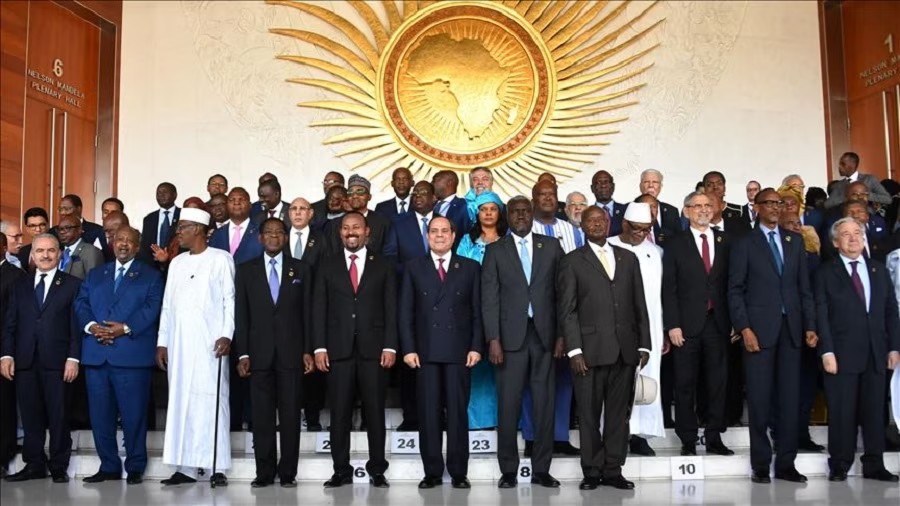With the need to constantly monitor the performance of the world economies in relation to Nigeria, that have high Gross Domestic Production.
South Africa – $5,090.72
Position – 6th
South Africa is the second-largest economy in Africa, second only to Nigeria with an estimated population of over 59.3 million people. It boasts of a GDP per capita of $5,090.72 to stand in sixth position. The country’s GDP per capita declined by 15.8% from $6,001.4 recorded in the preceding year.
Botswana – $6,710.99
Position – 5th
Botswana, a country in the centre of Southern Africa with a population of 2.35 million people, recorded the fifth highest GDP per Capita in Africa at $6,710.99. The country’s GDP in 2020 stood at $17.18 billion, representing a 7.89% decline compared to $18.65 billion recorded in the previous year.
In the same vein, its GDP per capita recorded a 15.8% decline from an aggregate of $7,970 printed in 2019.
.
Gabon – $7,005.88
Position – 4th
Gabon, a country on the west coast of Africa boasts of being the fourth highest economy in Africa based on GDP per individual with $7,005.88 and an estimated population of 2.23 million people based on data obtained from the World Bank.
The latest figure represents a 9.8% decline when compared to $7,767.02 recorded in the previous year, having recorded a 1.32% contraction in GDP value to stand at $19.67 billion.
Equatorial Guinea – $7,143.24
Position – 3rd
Equatorial Guinea recorded a GDP per capita of $7,143.24 in 2021, representing the third highest on the African continent in the review period.
The country’s GDP per capita declined by 15.2% compared to $8,419.93 recorded in the preceding year as a result of the 4.89% decline in the aggregate GDP. Its GDP stood at $11.88 billion in the period under review.
Mauritius – $8,622.68
Position – 2nd
Second on the list is Mauritius, with an estimated GDP per capita of $8,622.68. This is 22.3% lower than $11,097.59 recorded in 2019.
Mauritius is a subtropical island country in the Indian Ocean, just over 1,130 kilometres east of Madagascar, off the south-eastern coast of Africa.
Its aggregate GDP in 2021 stood at $11.74 billion, representing 14.87% decline compared to $13.79 billion recorded in 2019.
Seychelles – $11,425.09
Position – 1st
Seychelles is a country located in the Indian Ocean which, between 480 and 1,600 km from the east coast of Africa. It has an estimated population of 98,462, one of the lowest on the African continent. Its GDP per capita in 2020 stood at $11,425.09, representing the highest recorded in Africa in the period.
Its GDP per capita recorded a significant decline of 29.5% from $16,198.52 recorded in 2019 to $11,425.09 in 2020. This is as a result of the 10.72% decline in the aggregate GDP in the period. The country’s GDP stood at $1.24 billion in the review period.
However, Fitch has forecasted that the country’s GDP will rebound by a 5% growth in 2021, driven by a robust resumption of tourist activities, favourable base effects, and supported by expansionary fiscal and monetary policies.
Bubbling under
- Namibia – $4,211.05
- Libya – $3,699.23
- Egypt – $3,547.87
- Eswatini – $3,415.46
Nigeria ranks 17th in Africa despite its economic value
Nigeria, the ‘giant of Africa’ and the most populous country in the region with over 200 million people residing in the country according to World Bank estimates, boasts of being the largest economy on the continent with an aggregate GDP of $468.6 billion.
Nigeria’s GDP per capita stood at $2,097.09 in 2020 to rank 17th on the list of African countries, representing a 6% decline compared to $2,229.86 recorded in the previous year. Despite, recording the highest aggregate GDP, it is no surprise that Nigeria’s GDP per capita paints a less than stellar picture as the population size is enormous compared to other countries in the region.
Notably, Nigeria’s population of around 206.1 million accounts for about 18% of the entire sub-Saharan African, which in essence affects the per capita output. However, it is no excuse as the country has the human resources and youthful population to spur significant economic growth.
Meanwhile, Nigeria’s real GDP recorded a 5.01% growth in the second quarter of 2021, largely driven by growth in the trade, ICT and electricity sector. It was also spurred by a favourable base period. Recall that in the corresponding period of 2020, Nigeria’s real GDP declined by 6.1% year-on-year.
Note: GDP per capita is an important metric that breaks down a country’s economic output per person and is calculated by dividing the GDP of a country by its population size.

